Table of contents
Raw drinking water is the best thirst quencher of all and the most important food in the human diet. The quality and ingredients of tap water can vary greatly from region to region; it cannot be certified as organic .
Use in the kitchen
Water (H 2 O) in the form of tap water is suitable for human consumption and can be used as a drink or for preparing food. In Switzerland, the water quality is very good, so you can drink tap water anywhere straight from the tap. The more lime ( calcium and magnesium ) the water has absorbed from nature, the harder it is. This does not reduce the quality of the water, but it does change its taste slightly. With particularly hard water, the taste suffers and a certain cloudiness sets in. In this case, you can use a water filter to reduce the lime content. Softer water is also less harmful to many household appliances. 1
Water is an important ingredient in soups and is suitable for cooking and steaming various foods. When cooking, vitamins and minerals are transferred into the water. This is why vegetables are usually cooked in salt water so that the cell walls are more permeable through osmosis. This shortens the cooking time so that more active ingredients are retained. Pulses, on the other hand, should be salted after cooking, otherwise the cooking time will be longer. If you do not want to do without cooking vegetables, you can reuse the cooking liquid for soups or sauces so that the vitamins and minerals that have been washed out are not lost. Steaming, blanching or stewing are undoubtedly gentler cooking methods than boiling because they retain more of the (heat-sensitive and water-soluble) vitamins and nutrients in the vegetables. Steaming and stewing are the best methods - both are nutrient-preserving because they use minimal cooking liquid.
Since water is necessary to maintain all life processes, people should ensure they drink enough fluids. However, the daily water requirement is subject to numerous influencing factors, which is why there is no uniform recommendation. Nevertheless, the World Health Organization ( WHO ), assuming an adult man weighing 70 kg and an adult woman weighing 58 kg under average conditions, assumes a requirement of 2.2 l/day for adult women and 2.5 l/day for men. During physical work and high temperatures, the requirement increases to 4.5 l for men and women. 2 We consume around 20-30% of our total fluid requirement through food. 3 This value varies depending on the individual diet. Based on their water content, foods can be classified as water-rich (more than 50%, e.g. fruit and vegetables), semi-moist (20-50%, e.g. bread, jam, honey ) and dry (up to 20%, e.g. nuts, chocolate, cereals). 4
Water as a drink (tap water or mineral water ) quenches thirst most effectively and is calorie-free. For variety, you can flavor it in various ways: as herbal or fruit tea (only use tap water; see at the end of this section), with a piece of citrus fruit peel , with ginger , peppermint or basil , lemon balm or fruits such as apples ,raspberries or strawberries, the water gets a pleasant and refreshing taste. If you want to make the most flavorful tea possible, it is best to use soft or filtered water. Making tea with mineral water is usually not recommended due to the high salt content. 5
Vegan recipe for a vegetable soup
Ingredients (for 4 people): 750 g potatoes , 500 g carrots , 2 leeks , 250 g celeriac , 1 large onion , 1 bunch of parsley , 1 l vegetable stock (from drinking water), 1 tbsp rapeseed oil (refined) , salt ,pepper .
Preparation: Peel the potatoes and celeriac and cut into cubes. Peel the carrots and cut into slices. Clean the leek and cut into rings. Wash the parsley and chop finely. Peel the onion and chop finely. Heat the rapeseed oil in a large pot and sauté the onion until translucent. Add the vegetables and fry for about 5 minutes, stirring. Add the vegetable stock and bring to the boil. Then simmer the soup on a medium heat for about 20 minutes until the vegetables are soft. Season the vegan vegetable soup with salt and pepper and serve with chopped parsley.
Vegan recipes with drinking water can be found under the note: " Recipes that have the most of this ingredient ".
| Not only vegans or vegetarians should read this: Vegans often eat unhealthily. Avoidable nutritional mistakes . |
Purchasing - Storage
You cannot buy tap water from large distributors such as Coop , Migros , Denner , Volg , Spar , Aldi , Lidl , Rewe , Edeka , Hofer , Billa or organic supermarkets such as Denn's Biomarkt and Alnatura , but directly from the water connection in your house or apartment. Compared to mineral water, it is therefore very inexpensive. The average price of water in Switzerland is 2 CHF/1000l. 6 Tenants pay for their drinking water through the utility costs, owners receive a water bill (drinking water and waste water) from the local water company.
Although organic mineral water is available to buy, there is no state organic seal behind it, but rather private ones that require certain environmental protection and sustainability standards.
Wild to be found
If you run out of drinking water on a hike, please note the following information from the Swiss Radio and Television ( SRF ) program Puls: Drinking water is generally available from wells in villages or towns. If they do not contain drinking water, they must be marked with the inscription "NOT DRINKING WATER". However, if a well is located somewhere on an alpine pasture, pasture or private property, it does not necessarily have to contain drinking water and does not have to be marked. Such wells are primarily made for animals and [...] are often fed by streams. Drinking from these or directly from streams is not life-threatening for healthy people, but can lead to vomiting and diarrhea. Small children, pregnant women and the elderly are therefore strongly advised not to drink such water. 7
Storage tips
Drinking water is best consumed fresh and cool. However, if it is kept open, its chemical composition changes. By absorbing CO 2 , it produces a small amount of carbon dioxide, which can slightly change the taste. You can store drinking water open, cooled and in a dark place, for up to four days. In addition to the temperature and the amount of light, the cleanliness of the storage location (settling of dirt particles and bacteria from the air) and the storage container (dissolving of substances) affect the quality. 8
Ingredients - Nutritional values - Calories
Water (H 2 O) is an inorganic compound of hydrogen (H) and oxygen (O). Tap water is fresh water and often has a very high degree of purity. However, it can vary greatly in quality and ingredients depending on latitude, country and region. According to the ordinance of the Federal Department of Home Affairs ( FDHA ), drinking water must be inconspicuous in terms of its smell, taste and appearance and must not pose a health risk in terms of the type and concentration of the microorganisms, parasites and contaminants it contains. 9
Typical minerals that are usually found in moderate amounts in tap water are: calcium , magnesium , copper , zinc , iron , sodium , selenium , chlorine, fluorine 10 as well as potassium , manganese and phosphorus . 11
The following values come from the US nutritional database USDA and serve as a guideline: There, per 100 g of drinking water, fluoride is given as 71 µg, sodium as 4 mg, copper as 0.01 and calcium as 3 mg. 38
Drinking water generally contains fewer minerals than mineral water . However, this is not necessarily the case, as a test by the consumer magazine "Bon à Savoir" in 2014 showed; for example, tap water in the city of Zurich contained more calcium and magnesium than four and five of the 20 best-selling mineral waters in Switzerland. 12
The complete ingredients of drinking water, the coverage of the daily requirement and comparison values with other ingredients can be found in our nutrient tables. In the article Nutrients explained you will get a detailed insight into the topic.
Effects on health
The body constantly excretes water or water vapor through urine, stool, breath and sweating. We should compensate for this loss through food and drink. Under certain conditions, such as activity level (sport or physical work), outside temperature (heat, dry air), illness and taking medication, the need for fluids increases. Older people also have a lower sense of thirst than when they were younger. This can be problematic if they are taking medication that can lead to fluid loss, such as diuretics. 13 High salt consumption also leads to an increased need for fluids.
Another important aspect, in addition to the mineral content, is the pH value of drinking water, as the body compensates for acidic stress in the metabolism by buffering minerals such as calcium from the bones. 14 Is tap water acidic? Drinking water with a pH value between 7 and 8.5 is usually in the alkaline range. If the value is below 7, you can raise it to 7 pH with lemon juice, for example - and drink water that smells and tastes interesting. Undigested lemon juice has a very low pH value, but the decisive factor is metabolism 15 and ultimately the citric acid cycle. We metabolize the organic acids and energy is created, which we exhale as CO 2 after combustion or processing. 16
A country's drinking water regulations ensure the protection of consumers by checking the defined limit values for the ingredients of the water. Regular monitoring of drinking water thus prevents damage to the health of the population. Since 2018, however, there have been increasing concerns in Switzerland about insufficient protection of groundwater from contamination in heavily populated or built-up areas due to conflicts over use. 17 In addition, medications or other pharmacologically active substances (X-ray contrast media, sex hormones) can repeatedly enter the drinking water cycle.
Secondary plant substances
Secondary plant substances are not relevant to the nutrient profile of drinking water. Find out more about the importance and classification of these bioactive substances in food in the article on secondary plant substances .
Dangers - Intolerances - Side effects
If you drink too little, i.e. you give your body too little liquid, or excrete too much water (vapor), you risk dehydration, which can lead to exsiccosis (drying out of the body). In colloquial terms, this is also called dehydration, which in chemical jargon, however, means the withdrawal of hydrogen. 18 Dehydration manifests itself differently in each person and also depends on the severity. Symptoms include thirst, dry mouth, tiredness, dizziness, muscle cramps, less urine, dark yellow or even light brown urine, headaches and dry skin or tongue. Mild dehydration can lead to problems with blood pressure, heart rate and body temperature. Severe dehydration can manifest itself in weakness (fainting) or confusion. In extreme cases, it can lead to kidney damage, brain damage and even death. If you are mildly dehydrated, you can drink fluids, preferably in the form of water, unsweetened fruit juice and tea. Of course, sports drinks (often sugary) and sodas are also popular. Alcoholic or caffeinated drinks are not good thirst quenchers. If you are moderate to severely dehydrated, you may need intravenous fluids. The latter is a medical emergency and is best treated immediately in a hospital with intravenous fluids. 19
But drinking too much also puts a strain on the kidneys and can even put them at risk. There are documented cases of acute water toxicity, which can be traced back to the rapid intake of large quantities of fluid that far exceed the kidneys' maximum excretion rate of around 0.7 to 1 l/hour. 20 A marathon runner who also compensates for his fluid loss with a lot of water without taking in sodium in the form of table salt at the same time will end up overhydrated, with a lack of sodium concentration in the blood serum (dilutional hyponatremia). In some cases this has even been fatal. 21 So you can't drink "on reserve".
If you have stomach problems, you should avoid carbonated mineral water or carbonated tap water. From a chemical point of view, carbonic acid is not acidic, but neutral: carbonated mineral water has a pH value of 7. However, carbonic acid promotes the production of gastric juice and thus acid reflux. Therefore, people with sensitive stomachs should drink still water. 22 Is carbonic acid harmful to bones? According to current knowledge, carbonic acid is not harmful to bones. There are many myths surrounding carbonic acid, which we explain in the article Mineral water (carbonated) .
In the USA, drinking water is repeatedly contaminated with, for example, lead. In many cases, this contamination is due to government austerity measures which rationalise away the work required for renovation or maintenance, or which carry out unreliable controls. 23 The heavy metal has particularly dangerous consequences for small children. Because it attacks the nervous system, children with elevated lead levels in their blood suffer from concentration difficulties, delayed brain development, or sometimes impaired hearing. In adults, the cardiovascular system and kidneys are affected. 24 In Switzerland, the use of lead in drinking water pipes has been banned since 1904. Nevertheless, many fittings are made of brass and contain an alloy of copper, zinc, and small amounts of lead. The Swiss Association for Water, Gas, and Heat ( SVGW ) further tightened and implemented the requirements in 2007. 8 The European Union ( EU ) has also revised its Drinking Water Directive to ensure the safety of European tap water. Although lead pipes still exist in some EU countries, the EU has reacted by tightening thresholds for certain pollutants (including lead). 25
In general, tap water in the USA is heavily chlorinated. In some countries (especially in the USA, but also in many European countries) the addition of chlorine is mandatory. Even in Switzerland, drinking water is partially chlorinated, but the majority of tap water is treated and supplied without chlorine. 26 Can you drink chlorinated tap water? It is controversial whether chronic consumption of chlorinated water is harmful to health. Opinions range from harmless 27 to worrying. 28 In the USA, a limit of 4 mg chlorine/l applies, 29 which the EPA ( Environmental Protection Agency ) has classified as harmless to health. In Switzerland, the limit values are significantly lower (0.1 mg/l). 9 According to the WHO, the chlorine content in disinfected drinking water is less than 1 mg/l. 28 Chlorine is the most commonly used disinfectant in drinking water treatment. Ozone and chlorine dioxide have also become established as alternative treatment methods. 29 When drinking water is treated with chlorine, chlorine dioxide and ozone, chlorite and chlorate (so-called disinfection by-products) can be produced. The maximum amounts of these are also regulated by law. A tolerance value of 0.2 mg/l has been set for chlorite and chlorate for drinking water in Switzerland and Germany. 9,30 In animal studies, high doses of the substances (1000 mg/l) have shown harmful effects on health. 31
Although nitrate is naturally present in groundwater in small quantities, agricultural over-fertilization (especially with liquid manure) or old sewage treatment plants can increase the nitrate content in groundwater. Water suppliers can generally easily comply with the current maximum value of 40 mg/l, which is classified as harmless. 8
From a health perspective, water filters for tap water are not necessary in Switzerland, Germany or Austria. Nevertheless, various manufacturers offer drinking water filters to filter out nitrate, pesticides or chlorinated hydrocarbons. These are often filter cartridges with ion exchangers or activated carbon. When the filter capacity is exhausted, the cartridges should be replaced in good time. Otherwise, the accumulated substances can pass back into the water. Filter devices are generally susceptible to the formation of germs. Table filters can be useful for softening very hard water. The taste of tea and coffee in particular suffers if the water is too hard. On the other hand, the minerals calcium and magnesium are lost through decalcification. 32
Ecological footprint - animal welfare
From an ecological point of view, drinking tap water is much more environmentally friendly. Not only do you save money by not having to buy water bottles, drinking tap water also reduces the production and recycling of plastic and glass bottles. This also means fewer greenhouse gas emissions and less waste. According to the EU Commission, access to better quality water could reduce bottled water consumption by 17%. 25
A study published in 2014 examined the ecological balance of Swiss drinking water in comparison with mineral water and other beverages, looking at the entire life cycle from water extraction, water treatment, distribution, domestic installation to treatment in the home (cooling, carbonator). The infrastructure in particular has a significant impact on the environmental impact. In addition to the electricity consumption for pumps that distribute the water, environmentally friendly materials and treatment processes primarily help to positively influence the environmental balance. The main finding: tap water only causes a fraction of the environmental impact that mineral water causes through bottling, packaging, distribution, home transport and cooling and in this case is to be preferred from an environmental point of view whenever possible. 33
For detailed explanations of various sustainability indicators (such as ecological footprint, CO2 footprint, water footprint), see our article: What does the ecological footprint mean? .
Global Prevalence - Crops
1 in 3 people in the world lack access to safe drinking water. A report by UNICEF and WHO shows that 1.8 billion people have gained access to basic drinking water since 2000, but there are huge inequalities in the accessibility, availability and quality of these services. In 2019, an estimated one in 10 people (785 million) still did not have basic services, including 144 million who drink untreated surface water. Data shows that 8 in 10 people living in rural areas do not have access to these services. The report also shows that 2 billion people still do not have basic sanitation, with 7 in 10 of them living in rural areas and a third living in least developed countries. Finally, the report highlights new data showing that 3 billion people do not have access to soap and water at home in 2017. It also shows that almost three-quarters of the population in the least developed countries lacked basic handwashing facilities. Each year, 297,000 children under five die from diarrhoeal diseases caused by inadequate washing. Poor sanitation and contaminated water are also linked to the transmission of diseases such as cholera, dysentery (frequent bowel movements), hepatitis A and typhoid. 34
Further information
There are different types of water. The Information Center for German Mineral Water ( IDM ) distinguishes between drinking water (tap water), natural mineral water, medicinal water, spring water and table water. 35
Natural mineral water must be characterised by certain properties in terms of origin, composition and extraction. It can also naturally contain carbon dioxide. 36 Detailed explanations can be found in the article on the ingredient mineral water (carbonated), raw (organic?) .
Medicinal water must come from underground and clean springs. Bottling is officially recognised and takes place directly at the source. It is subject to the Medicines Act and, due to its mineral composition, has scientifically proven preventive, soothing or healing properties. Spring water also comes from underground water sources. Bottling must also take place at the source, but is not officially recognised. Its composition must meet the requirements of drinking water, but is not subject to such high purity requirements as natural mineral water. Table water is produced industrially. It can consist of various types of water (drinking water, mineral water, natural brine, sea water) and you can optionally add other minerals or carbon dioxide. The same purity requirements apply as for drinking water, but there are no legal regulations for the mixing ratios. 35
In comparison to other natural resources, water is not effectively referred to as consumption, but rather as use. In principle, the amount of water on earth remains the same in all states of aggregation; only the distribution between the environmental compartments (water, soil, air, earth's crust) changes. Only a very small amount escapes from the atmosphere into space as water vapor. When water is used, it can become contaminated and polluted. 37
Alternative names
Colloquial terms for drinking water that comes from the tap are: Kran(en)wasser, Krane(n)berger, Kranenburger (derived from the West Central German term Kran for tap) or Rohrperle. Gänsewein, Brunnenwein (Italian vino di fonte), Adamsbier (English Adam's ale) or Adamswein (Adam's wine) were also common terms for drinking water in the past. In Switzerland it is known as Hahnenwasser or Hahnenburger. The French equivalent is Château (de) la pompe. In English, tap water is called "tap water".
Other uses
Tap water is used not only for drinking and cooking, but also for cleaning, washing, personal hygiene and flushing toilets. 35
Bibliography - 32 Sources
| 1. | Wikipedia Wasserhärte |
| 2. | Sge-ssn.ch Medienmitteilung 2742010. |
| 3. | Who.int water_sanitation_ health/dwq/nutrientsindw. |
| 4. | Sge-ssn.ch Merkblatt Flüssigkeitsbedarf und Getraenke 2011. |
| 5. | Wikipedia Grüner Tee. |
| 6. | Sge-ssn.ch Lebensmittelgruppen Getränke. |
| 7. | Vitagate.ch Wasser Qualität. |
| 8. | Trinkwasser.svgw.ch. |
| 9. | akwater.com |
| 10. | Jungbluth N. Vergleich der Umweltbelastungen von Hahnenwasser und Mineralwasser. Gas, Wasser, Abwasser; Vol. 2006 (3): 215-219. |
| 11. | Srf.ch Wasser ist nicht immer zum Trinken da. |
| 12. | Pr.uni-freiburg.de pm/ 2006/pm.2006-05-17.134. |
| 13. | Trinkwasser.svgw.ch. |
| 14. | Bzfe.de Wasser zubereitung und Lagerung. |
| 15. | ncbi.nlm.nih.gov |
| 16. | Schünke G. et al. Arbeitsbuch Orthomolekulare Medizin: Bestandteile unserer Nahrung zur Prophylaxe und Therapie. Stuttgart: Hippokrates; 1997. |
| 17. | Von Koerber K. Vollwert-Ernährung: Konzeption erner zeitgemässen und nachhaltigen Ernährung. Stuttgart: Karl F. Haug; 2012. |
| 18. | Remer T, Manz F. Potential Renal Acid Load of Foods and its Influence on Urine pH. Journal of the Academy of Nutrion and Dietetics. 1995. |
| 19. | Wikipedia Belebtes Wasser. |
| 20. | Wikipedia Heilwasser. |
| 21. | Ndr.de Mineralwasser - wie gesund ist Kohlensäure Mineralwasser. |
| 22. | Srf.ch/news Die USA haben ein Trinkwasser Problem. |
| 23. | Stadt-zuerich.ch Medienmitteilung Befristete Vorsorge beim Trinkwasser. |
| 24. | Chlorine.americanchemistry.com Chlorine Drinking Water FAQ. |
| 25. | Wasserhelden.net Unser Trinkwasser Inhaltsstoffe Chlor. |
| 26. | Epa.gov ground water and drinking water/ national primary drinking water regulations. |
| 27. | Who.int water sanitation health chlorine. |
| 28. | Wassertest-online.de Gechlortes Wasser. |
| 29. | Kfvbl.ch Schadstoff Höchstkonzentration im Wasser. |
| 30. | Avsv.sg.ch KAL Jahresberichte. |
| 31. | Wikipedia Chlorung. |
| 32. | Wikipedia Leitungswasse |

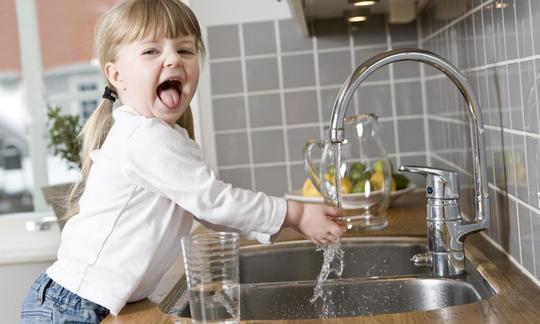

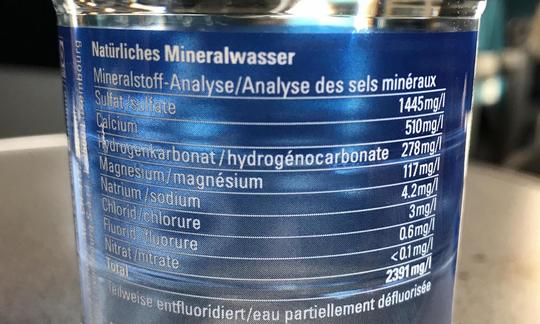

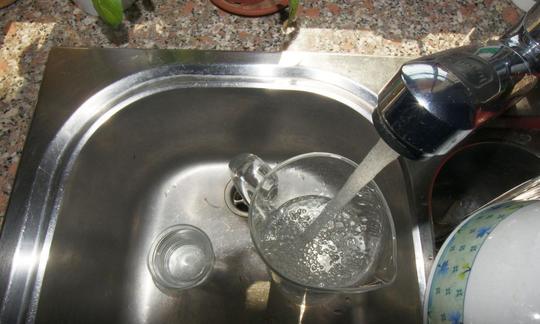



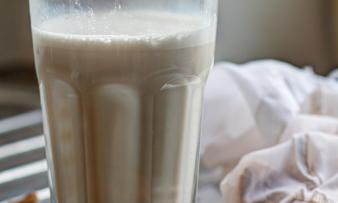
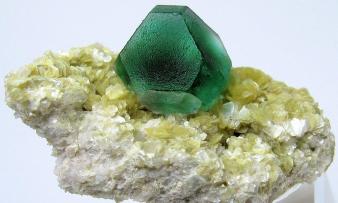




Comments